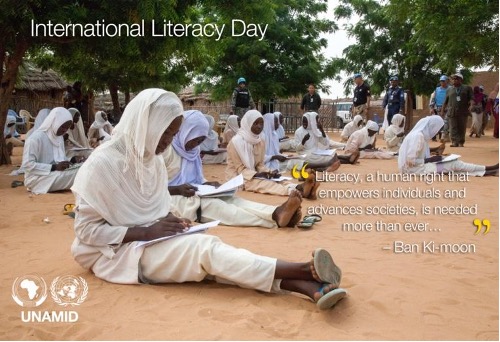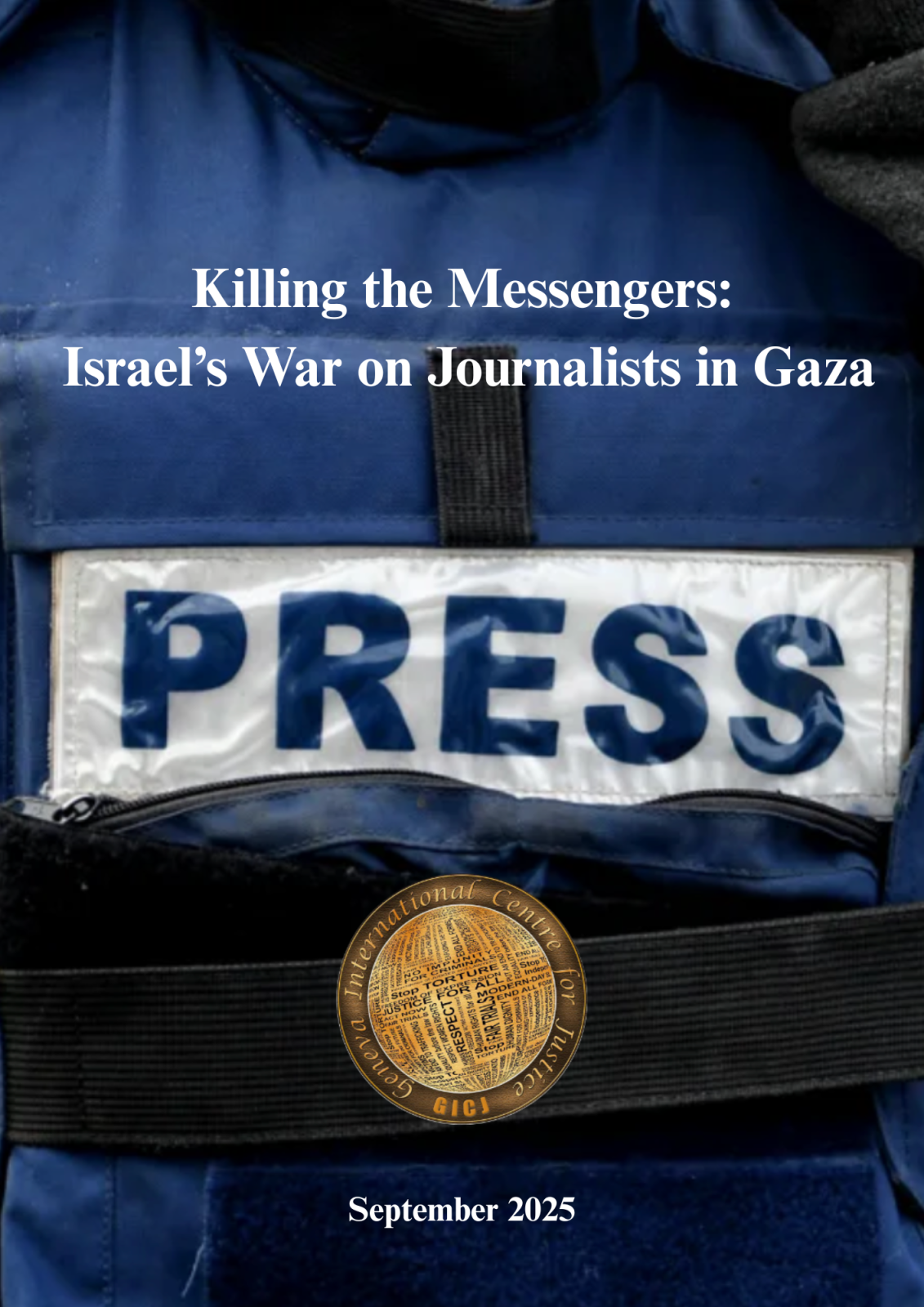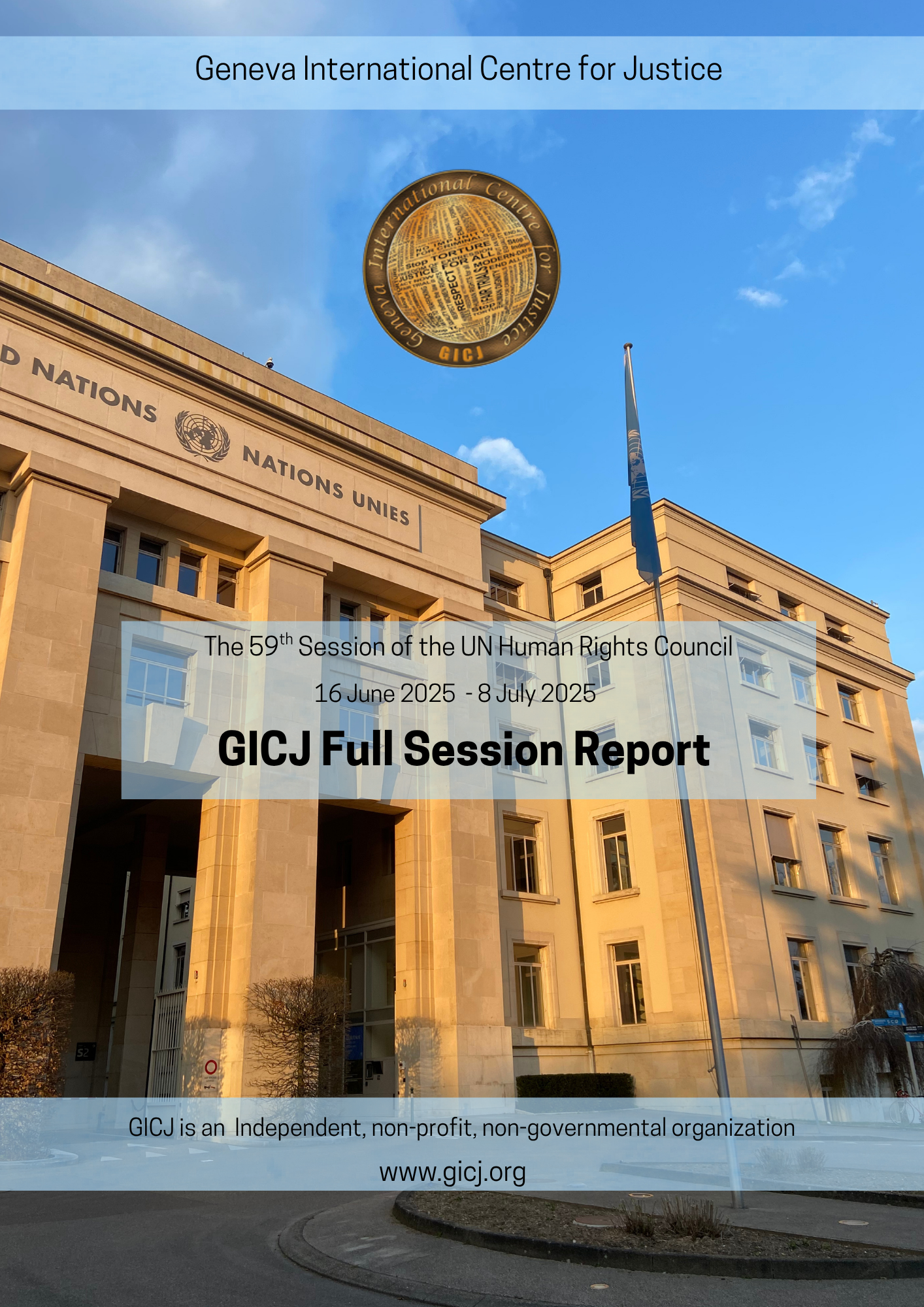By Emily Bare / GICJ
"For everyone, everywhere, literacy is, along with eduction in general, a basic human right.... Literacy is the road to human progress and the means through which every man, woman and child can realise his or her full potential.” ― Kofi Annan
 The 8th of September marks the annual day to remind the international community of the importance of literacy as a matter of dignity and human rights. The day aims to advance the literacy agenda that enables human beings to march towards a more cultured, literate, and sustainable society. On this day each year, organisations and individuals step forward and utilise their literacy to support and aid those who are having trouble reading and writing. In 1965, International Literacy Day was first conceived at the "World Conference of Ministers of Education on the Eradication of Illiteracy" held in Tehran, Iran [1]. The following year, on 26 October 1966, the United Nations Educational, Scientific and Cultural Organisation (UNESCO) took the lead and declared 8 September as International Literacy Day at the 14th session of UNESCO's General Conference [2]. The first International Literacy Day was celebrated in 1967. In 2015, the United Nations (UN) adopted its Sustainable Development goals (SDGs) to mobilise efforts to eradicate inequalities across the world, of which improving literacy rates is an integral element. This year's International Literacy Day theme is "Transforming Literacy Learning Spaces."
The 8th of September marks the annual day to remind the international community of the importance of literacy as a matter of dignity and human rights. The day aims to advance the literacy agenda that enables human beings to march towards a more cultured, literate, and sustainable society. On this day each year, organisations and individuals step forward and utilise their literacy to support and aid those who are having trouble reading and writing. In 1965, International Literacy Day was first conceived at the "World Conference of Ministers of Education on the Eradication of Illiteracy" held in Tehran, Iran [1]. The following year, on 26 October 1966, the United Nations Educational, Scientific and Cultural Organisation (UNESCO) took the lead and declared 8 September as International Literacy Day at the 14th session of UNESCO's General Conference [2]. The first International Literacy Day was celebrated in 1967. In 2015, the United Nations (UN) adopted its Sustainable Development goals (SDGs) to mobilise efforts to eradicate inequalities across the world, of which improving literacy rates is an integral element. This year's International Literacy Day theme is "Transforming Literacy Learning Spaces."
Global Literacy Inadequacies
Literacy promotes sustainable development, increases labour-force participation, improves child and family health and nutrition, reduces poverty, and expands life opportunities.
Despite progress being made, there are roughly 771 million individuals who still lack minimum literacy skills; one in five adults are still not literate and two-thirds of them are women [3]. Roughly 60.7 million children are out-of-school and many more attend irregularly or drop out [4]. There also seems to be a clear connection between illiteracy and countries in severe poverty as well as between illiteracy and prejudice against women [5].
In the aftermath of the global COVID-19 pandemic, nearly 24 million students may never return to formal education, out of which, 11 million are projected to be girls and young women [6].
Further, humanitarian crises such as those in Afghanistan, Yemen, and in Ukraine are also crises in education, with millions fleeing war-torn countries. In Ukraine, aside from the 7.1 million people displaced by the war, more than 2,000 schools were damaged and more than 200 destroyed, impacting the students in Ukraine for decades to come [7].
Transforming Literacy Learning Spaces
This year's theme, "Transforming Literacy Learning Spaces" recognises that to achieve the SDGs 2030 Agenda, the global community must transform and enrich the existing learning spaces through an integrated approach and enable literacy learning in the perspective of lifelong learning. This theme provides an opportunity to rethink the fundamental importance of literacy learning spaces to foster resiliency and ensure quality, equitable, and inclusive education for all.
Literacy learning spaces include the physical environment, learning materials, and activities required to facilitate the creation of the space [8]. With an expanded definition of literacy, it is evidence that literacy learning is commonly occurring beyond traditional "school-classroom" settings, such as in the workplace, community, family, library, and among digital platforms.
The transformation of literacy learning spaces entails the management of physical facilities in a more sustainable manner. Additionally, transformation also comprises changes in the governance structure of the educational systems and institutions. These changes would allow the outcomes of literacy learning from informal and non-formal settings to be recognised, validated, and accredited through flexible data-driven monitoring and evaluation processes.
The COVID-19 pandemic brought unprecedented conflict for the advancement in literacy learning. The sudden and massive shift to remote digital learning in response to COVID-19 presented itself as both an opportunity for innovation and a risk for furthering existing digital learning disparities among youth and adults, globally. In some countries, the technological advancement in literacy learning spaces, by use of a digital environment, ensured the continuation of learning for adults and youth around the world. These countries had existing technological infrastructure that could adapt to digital and hybrid modes of learning. However, countries with low infrastructure were left behind and many countries struggled to advance their learning spaces during the pandemic. The growing digital divide in terms of connectivity, infrastructure, and the ability to engage with technology in providing quality education for all has prevented at least one-third of learners from pursuing study remotely, fueling the vicious inequality cycle [9].
Policies should aim to leverage the development of literacy learning spaces equally among formal and informal contexts. Concurrently, these policies should aim to adapt and transform the learning spaces to be safe, resilient, equitable, and inclusive in setting the stage for lifelong learning of youth and adults around the world.
Furthermore, there are significant gaps in the inclusion of indigenous and ethnic minority individuals in the formal education systems given the linguistic and geographical barriers, along with factors such as racism, discrimination, and lack of cultural relevance. Policies must adapt literacy learning spaces for all, includinggender responsive spaces, refugee, internally displaced, and migrants spaces, and low to no-tech solutions for low-and middle-income countries.
According to a report by the International Commission on the Future of Education (2021), for transformation it is inevitable for the global communities and national governments to address disproportionate access to technology, including access to basic resources, such as electricity and household internet [10]. This is especially true for youth and adults from vulnerable groups facing intersectional disadvantages due to poverty, gender identities, sexual orientation, social status, ethnicity, language diversity, disabilities, and geographical location.
Embracing many types of literacy learning spaces, such as the home, community, workplace, digital, and hybrid, enables a holistic approach by incorporating all key-stakeholders and satisfies the learning requirements of youth and adults of all profiles and circumstances. It allows the inclusion of marginalisedgroups, ensures learning continuity, enables learners to be active citizens, and progresses towards the notion of creating learning societies. Additionally, these learner-centric spaces by design may promote literacy in thelocal language and support the learners in becoming literate in their first language along with their literacy in national languages.
Literacy learning spaces are evolving, and policies and strategies must keep up by providing targeted financing and permitting systemic level recognition, validation, and accreditation of informal and non-formal learning outcomes.
Geneva International Centre for Justice (GICJ) celebrates the international endeavour for advancing literacy learning spaces, yet we are alarmed by the number of youths and adults that face inequality and discrimination in their pursuit of literacy advancement.
We continue to condemn all forms of literacy inequality and discrimination and show our support for youth and adults, transforming literacy learning spaces, and coordination to achieve the SDGs 2030 Agenda. GICJ actively recognises the importance of literacy as a matter of dignity and human rights and calls for further policies to promote equality and inclusion.
International Literacy Day, Literacy, Transformation, Literacy Learning Spaces, Equity, Inclusion, Justice, Geneva, geneva4justice, GICJ, Geneva International Centre for Justice
Sources:
[1] https://unesdoc.unesco.org/ark:/48223/pf0000126383
[2] https://unesdoc.unesco.org/ark:/48223/pf0000114048
[3] https://uis.unesco.org/en/topic/literacy
[5] https://www.unesco.org/gem-report/en
[6] https://events.unesco.org/event?id=2036446720&lang=1033
[7] https://saveschools.in.ua/en/
[8] https://en.unesco.org/sites/default/files/ild-2022-cn-en.pdf
[9] https://en.unesco.org/sites/default/files/ild-2022-cn-en.pdf
[10] https://en.unesco.org/sites/default/files/ild-2022-cn-en.pdf
Image Source: (Flickr) https://flic.kr/p/yjSzzC
International Day Articles by GICJ:

















